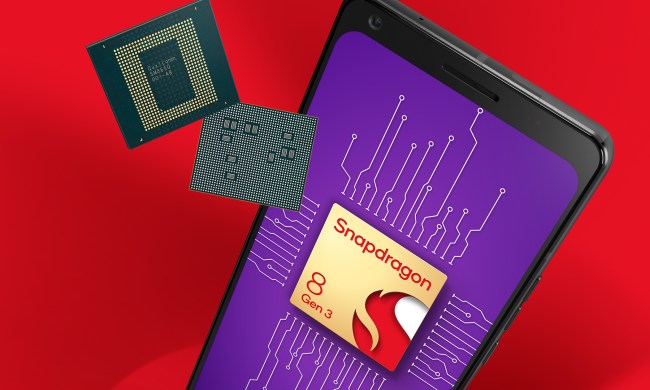In a surprise announcement, Qualcomm has taken the wraps off of a new chipset: The Snapdragon 870. Take a slightly deeper look, however, and you will find a lot of similarities between the Snapdragon 870 and the 865+ — they’re almost identical.
Like the Snapdragon 865+, the Snapdragon 870 is built in Qualcomm’s Kryo 585 CPU cores, however it ups the clock speed to 3.2GHz from 3.1GHz, leading us to believe that it’s probably just a higher-binned version of the same product. Looking down the spec sheet, it is otherwise identical — same GPU, same supporting coprocessors, same modem, all down the line.
“Building upon the success of Snapdragon 865 and 865 Plus, the new Snapdragon 870 was designed to address OEM and mobile industry requirements,” said Kedar Kondap, vice president, product management, Qualcomm Technologies, Inc. “Snapdragon 870 will power a selection of flagship devices from key customers including Motorola, iQOO, OnePlus, OPPO, and Xiaomi.”
While the launch of the “new” chip does seem to be a bit of a cash grab, the Snapdragon 865+ wasn’t a bad product — it was Qualcomm’s most powerful chipset for 2020. It was featured in the Samsung Galaxy Note 20 series, the Galaxy Z Fold 2, the Asus ROG Phone 3, and more great phones.
It is interesting to see that a number of smartphone manufacturers have also signed on to build phones with the Snapdragon 870, and ultimately, we’ll have to see how many opt for this chipset over the 2021 flagship Snapdragon 888. Qualcomm doesn’t disclose pricing for its chipsets to the public, but we can only assume that the Snapdragon 888 is quite expensive, like the Snapdragon 865 was rumored to be when it was the top-end chip. A number of manufacturers including Google with the Pixel 5, ended up opting for a 7-series chipset instead of the 865 last year.
Chip binning essentially refers to the fact that during the manufacturing process of building chipsets, some end up higher quality than others, and thus able to achieve a higher level of performance. A good example of this is the Intel Core series — if an Intel CPU fails to achieve the performance requirements of an Intel Core i5, it may bin it as a Core i3 instead. It’s entirely possible that Qualcomm found it economical to keep manufacturing Snapdragon 865 components, and has turned the best of those into the new Snapdragon 870.
Beyond the companies that have already been announced, we’ll have to wait and see just how many make use of the Snapdragon 870.



